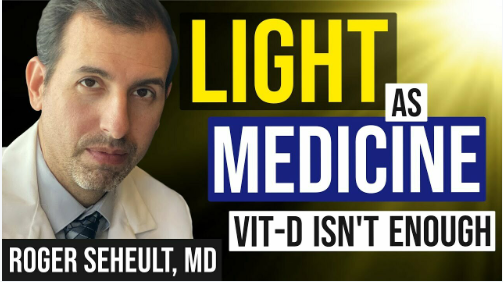The interview between Professor R. Seheult and K. Allred titled “Sunlight: Optimizing Health and Immunity (Light Therapy and Melatonin)” currently has over 3.8 million views on YouTube and mainly summarizes findings from studies by Professor R. Reiter, a melatonin expert, and S. Zimmerman, an expert with over 35 years of experience in lighting.
Mitochondria are our energy factories, present in almost every human cell (exceptions include red blood cells). Cells can be imagined as cars, and mitochondria are the engines that power the car. However, the engine in a car can overheat, and the same can happen to mitochondria, where “overheating” represents oxidative stress. This oxidative stress is inevitable and arises not only from external stimuli (sunlight, pathogen infection, etc.) but also as a byproduct of cellular metabolism, which is crucial for the functioning of all cells and thus the entire organism. Oxygen molecules are electron acceptors transferred across the inner mitochondrial membrane via a protein complex, including cytochrome c oxidase, which absorbs red and near-infrared (NIR) radiation. Unfortunately, neither cells nor mitochondria are perfect, and reactive oxygen species (ROS) can form within them.
Oxidative stress, most often in the form of ROS (also: nitrogen free radicals, lipid radicals, etc.), is essential for us if it occurs at the right time and place, e.g., when white blood cells fight pathogens. In most cases, however, it must be compensated by molecules with antioxidant effects. One of the strongest antioxidants is melatonin, often associated with circadian rhythms. It is no coincidence that it is called the “hormone of darkness” because it is secreted by the pineal gland (an endocrine gland located in the brain) only when it is dark or in the absence of short wavelengths (mainly blue with a peak around 480 nm). This so-called circulating melatonin is secreted into the cerebrospinal fluid and blood and signals the proper timing of cellular events while protecting cells at night. However, cells also need protection against oxidative stress during the day. Current research shows that almost all cells can produce their own so-called subcellular melatonin within mitochondria, which daily fights against free radicals and oxidative stress within the cell or nearby neighboring cells (so-called autocrine and paracrine effects). It is estimated that this intramitochondrial melatonin may account for up to 95% of total melatonin in the body, while circulating pineal melatonin contributes only 5%.
There is a belief in society that most oxidative stress arises from UV, purple, and blue visible radiation and that the rest is harmless. This is refuted by studies showing that the entire solar spectrum can generate oxidative stress, but to different extents, with UV contributing the most. UVC radiation is largely filtered by the atmosphere, while longer wavelengths pass through. Therefore, more than 70% of the photons that reach the human body are in the red-infrared range (650-1200 nm). So how do cells cope with this? It is believed that light in this range (650-1200 nm) stimulates cells to produce the aforementioned subcellular melatonin, which compensates for these negative effects. However, the problem is that the human organism spends 93% of its time indoors under artificial lighting that does not contain these wavelengths, reducing cells’ ability to cope with oxidative stress on their own. This may be one reason for the increasing incidence of civilization diseases. Moreover, the antioxidant and repair capacity of the organism decreases with age, and it is believed that this is related to aging.
Nature designed this brilliantly; in the morning, sunlight contains more red and NIR photons, which are believed to help equip the organism with an antioxidant shield in the form of melatonin against UV radiation and so-called HEV photons (high energy photons) with short wavelengths, whose representation in the solar spectrum peaks at noon. In the evening, during sunset, the content of red and NIR photons helps the body clear the remaining oxidative stress that the morning photons couldn’t handle.
When developing artificial light sources, it is therefore necessary to place maximum emphasis not only on the presence of azure wavelengths, which signal “it’s day” to the body but also on the presence of long wavelengths from 650 nm onwards to stimulate the production of subcellular melatonin.
Studies on which the interview is based:
- 1 Zimmerman a R. J. Reiter, „Melatonin and the Optics of the Human Body”, Melatonin Research, roč. 2, č. 1, Art. č. 1, úno. 2019, doi: 10.32794/mr11250016.
- 2 -X. Tan, R. J. Reiter, S. Zimmerman, a R. Hardeland, „Melatonin: Both a Messenger of Darkness and a Participant in the Cellular Actions of Non-Visible Solar Radiation of Near Infrared Light”, Biology, roč. 12, č. 1, Art. č. 1, led. 2023, doi: 10.3390/biology12010089.
- 3 Zastrow et al., „The Missing Link – Light-Induced (280–1,600 nm) Free Radical Formation in Human Skin”, Skin Pharmacol Physiol, roč. 22, č. 1, s. 31–44, 2009, doi: 10.1159/000188083.
Translated using AI


